Key takeaways:
- Selective mutism is an anxiety disorder that affects children’s ability to speak in specific social situations while allowing comfortable communication in others.
- Therapeutic techniques like cognitive behavioral therapy, play therapy, and gentle exposure therapy help reduce anxiety and encourage communication.
- Personal breakthroughs in therapy, such as ordering a drink or using art for expression, are pivotal moments in overcoming selective mutism.
- Building a trusting relationship with a therapist and setting small, achievable goals are essential for effective treatment.
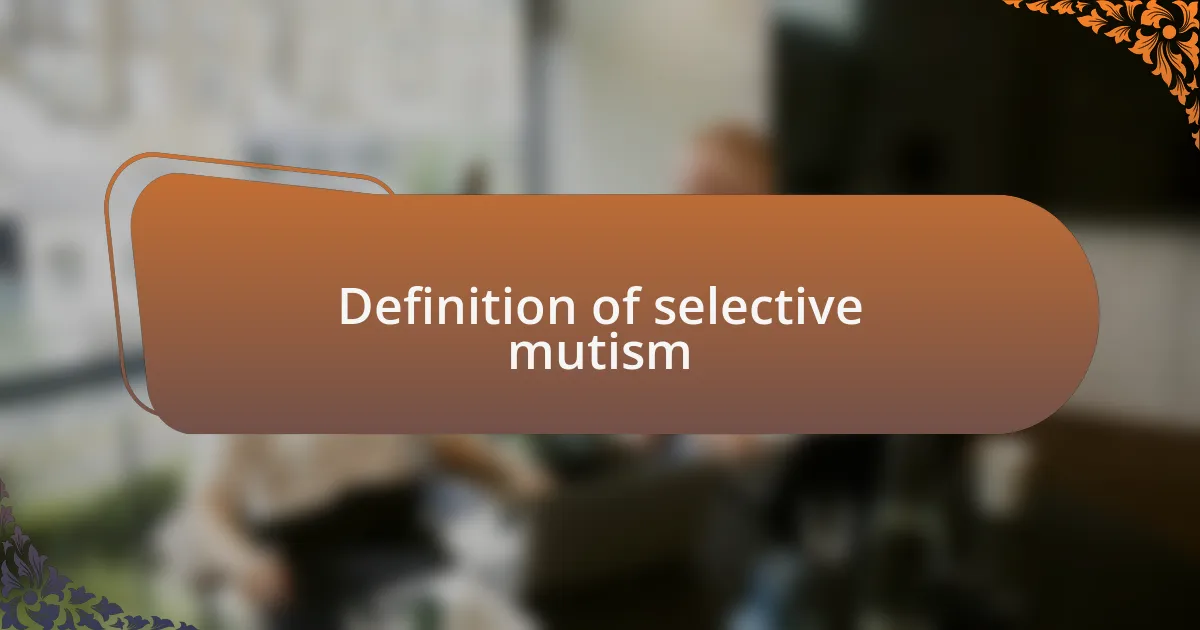
Definition of selective mutism
Selective mutism is a complex anxiety disorder that primarily affects children, rendering them unable to speak in certain social situations, even though they can communicate comfortably in other environments, like at home. I remember the first time I realized the weight of this condition; it wasn’t just about silence, but a profound fear that can grip a child, making simple conversations feel monumental. Have you ever felt that kind of anxiety before entering a room full of unfamiliar faces?
The condition typically manifests in early childhood and can persist into later years if left unaddressed. In my experience, it’s not merely a refusal to speak; it’s often rooted in overwhelming anxiety that can stem from various factors, including genetics, environment, and personal temperament. I often found myself wondering, why does this happen to some children and not others? It feels crucial to recognize that every child’s journey with selective mutism is unique, shaped by their own experiences and emotions.
Treatment often involves therapeutic strategies designed to reduce anxiety and foster communication in comfortable settings. From my time in therapy, I learned that creating safe spaces for children to express themselves can make all the difference. It leads me to ask: what small steps can we take today to encourage someone’s voice?

Impact of selective mutism
The impact of selective mutism extends far beyond the inability to speak in certain situations. I remember when a close friend’s child struggled with it; the quietness often masked frustration and isolation. Those around them might interpret silence as indifference, which can exacerbate the feelings of loneliness and misunderstanding—a silent battle that many do not see.
Academically, I’ve seen how selective mutism can hinder learning and social development. In classroom settings, children might miss out on collaborative activities or peer friendships due to their struggle to communicate. I often wondered how many opportunities slip away when a child’s voice is stifled. It’s a reminder that every unspoken thought is a connection lost.
Emotionally, the burden of selective mutism can weigh heavily on both the child and their family. I’ve talked with parents who reported feelings of helplessness, watching their child grapple with anxiety while yearning to be heard. How do we navigate that landscape of emotions while still encouraging our loved ones to express themselves? It’s an ongoing journey that requires patience, understanding, and unwavering support.
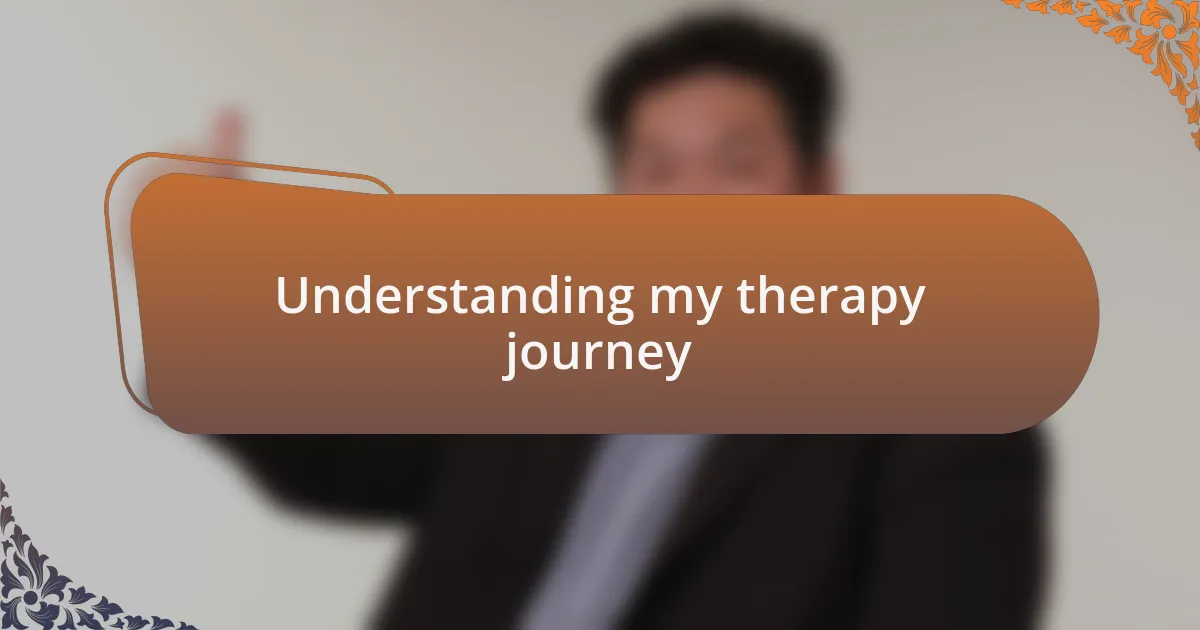
Understanding my therapy journey
Navigating my therapy journey has been a revealing experience. One moment stands out vividly: sitting in a quiet room, I struggled to find my voice while the therapist encouraged me gently. There was comfort in knowing I wasn’t alone, yet the silence loomed large, making me question how I could ever truly express myself.
With each session, I learned that my struggle was not just about speaking; it was about connecting. I remember sharing my fears and doubts, feeling the weight of years of unvoiced thoughts. Why did I hesitate? Each time I opened up, it felt like shedding a layer of armor built from anxiety. I realized that every word spoken was not just a step toward overcoming mutism but also a moment of reclaiming my identity.
As the journey progressed, I found solace in small victories. Discovering alternate forms of expression—writing or drawing—allowed me to communicate when words felt too heavy. Have you ever felt that sense of liberation from something that held you back? In those moments, I discovered that overcoming selective mutism isn’t merely about vocalization; it’s about feeling heard and validated in every sense, even if it starts with just a whisper.
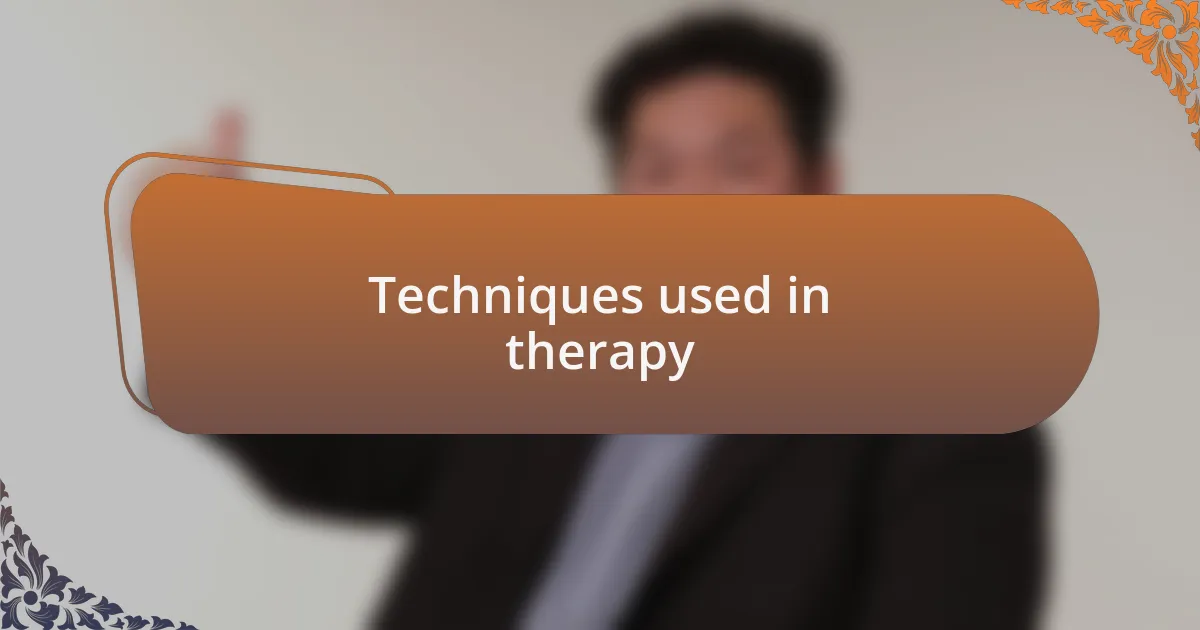
Techniques used in therapy
One technique that stood out to me was cognitive behavioral therapy (CBT). In our sessions, my therapist helped me identify the negative thoughts that fueled my anxiety about speaking. I remember when we worked through a particular scenario where I feared judgment; it was eye-opening to realize how my own thoughts shaped my reality. Could a change in perspective really lead to a shift in my ability to communicate? I found it surprisingly effective.
Another approach that made a significant difference was play therapy, which utilized games and storytelling to ease the pressure of speaking. I vividly recall a session where I engaged in a simple card game, the laughter breaking down the walls of silence. In those moments, it felt less like therapy and more like strategic fun. Is it possible that by removing the traditional pressures of conversation, I could find my voice more naturally? I discovered that this technique made me less self-conscious and allowed my words to flow more freely when it truly mattered.
Additionally, gentle exposure therapy played a crucial role in my progress. My therapist guided me toward gradually practicing speaking in safe environments. The day I spoke to a classmate in a low-pressure setting marked a pivotal moment for me. Did that small interaction really pave the way for larger conversations down the road? It did; those incremental steps became stepping stones to building my confidence in social situations.
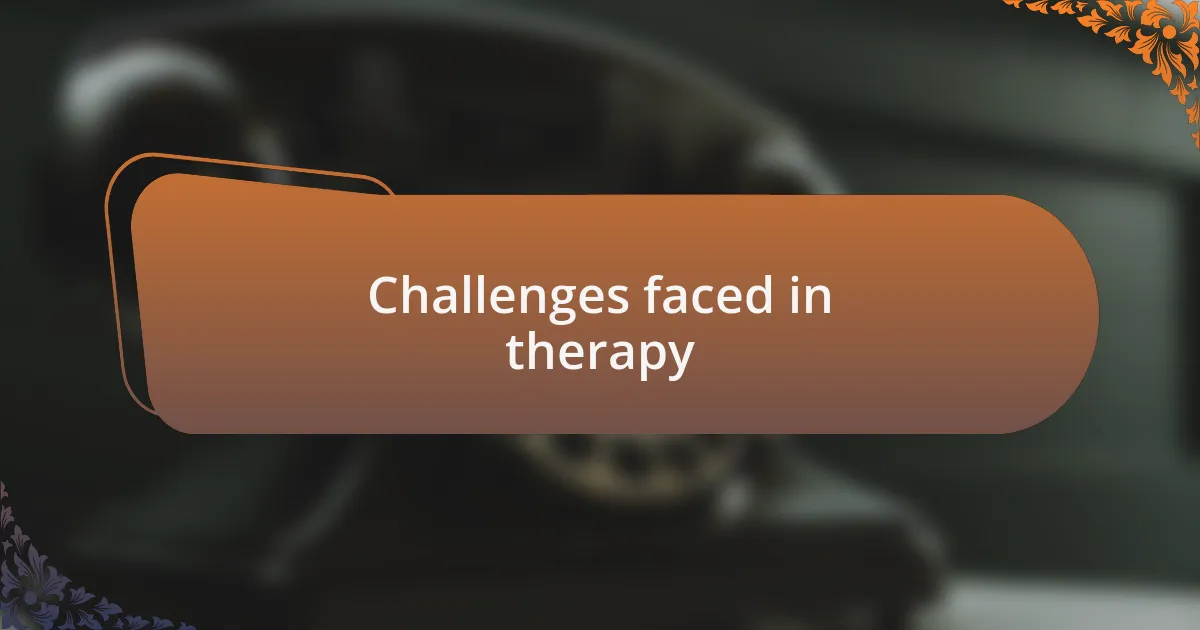
Challenges faced in therapy
Therapy for selective mutism isn’t without its hurdles. One significant challenge I faced was the overwhelming anxiety that often crept in during sessions. I’ll never forget one particular day when just the thought of having to speak, even a simple word, left me paralyzed. I found myself questioning whether I would ever truly feel comfortable enough to share my thoughts in any setting.
Another obstacle was the resistance to change. Despite knowing that my therapist had my best interests at heart, I struggled with opening up to unfamiliar techniques. There were moments when I’d sit in silence, pondering if this was just another method that wouldn’t work for me. How could I trust the process? It took time and perseverance, but slowly I learned that progress is often uncomfortable, and that’s where growth truly happens.
Additionally, there were inevitable setbacks. I remember a day when I nearly burst into tears after a failed attempt to speak in a group role-play exercise. It felt like taking two steps forward and three steps back. In those moments, I had to remind myself that setbacks are part of the journey. Healing isn’t linear, and reflecting on those instances helped me build resilience and a deeper understanding of my own needs in therapy.
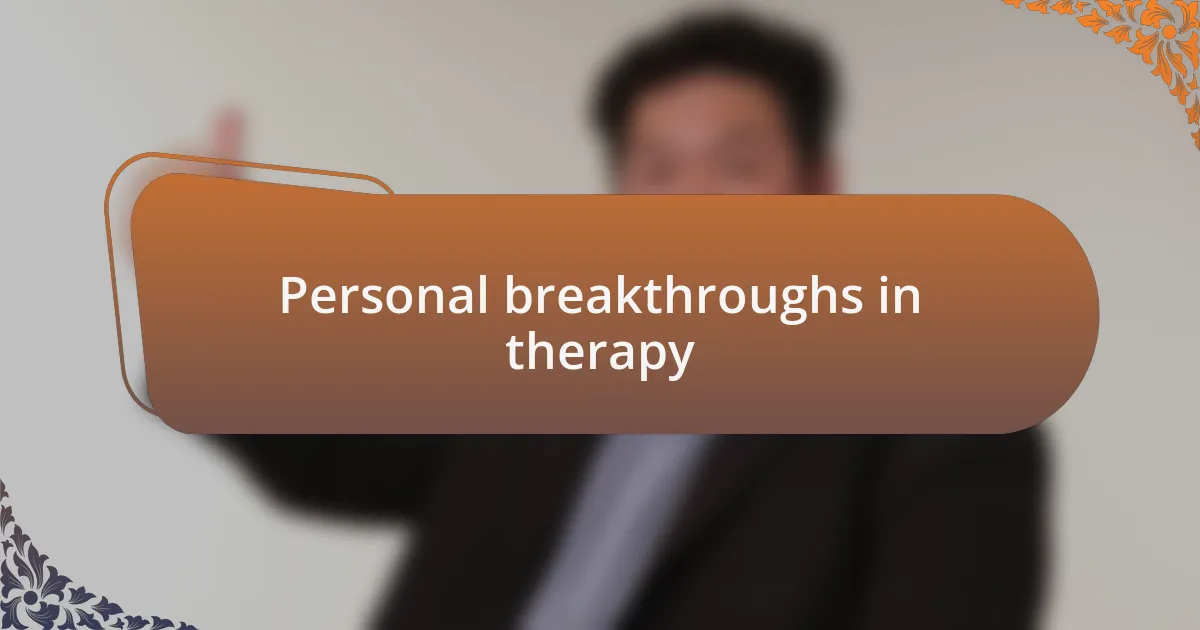
Personal breakthroughs in therapy
One breakthrough moment that stands out for me was when I first managed to order my own drink at a café. It might seem like a small victory, but for someone grappling with selective mutism, it was monumental. I remember the rush of adrenaline as I spoke to the barista, feeling my heart race yet also sensing a flicker of empowerment—I proved to myself that I could use my voice, even in an everyday situation.
Another pivotal experience was when I began to use art as a form of expression during therapy sessions. I never considered myself an artist, but suddenly, I found it easier to convey my feelings through drawing. It became a bridge between my inner world and the outside, transforming my anxiety-driven silence into vibrant colors and shapes. Have you ever felt like a picture spoke louder than words? In many ways, that’s how I discovered my voice—through the medium of creativity.
Lastly, I vividly recall a session where my therapist introduced role-playing in a safe environment. I was hesitant at first, thinking, “Will pretending to be someone else really help me?” But as we played different scenarios, I began to feel lighter, almost liberated. It surprised me how stepping into someone else’s shoes made it easier to express my own thoughts and feelings. Each role-play became a stepping stone, guiding me gently toward finding my authentic voice in real life.

Tips for seeking help
When seeking help for selective mutism, it’s essential to build a connection with a therapist who understands your unique needs. I remember my first therapy session feeling like a leap into the unknown. Finding someone who not only specialized in selective mutism but also had a warm, empathetic approach made all the difference in my journey. Have you ever felt that immediate comfort with someone? It can truly set the stage for healing.
Don’t hesitate to communicate your worries and expectations with your therapist. Early in my therapy, I struggled to articulate my fears about speaking in social situations. But when I finally took a deep breath and shared these anxieties, it opened up new pathways in our discussions. This transparency not only eased my mind but also helped my therapist tailor strategies that worked for me.
Setting small, achievable goals with your therapist can be incredibly motivating. I remember setting a target to speak one sentence in a group setting during each session. At first, it was daunting, but each small success felt like gaining a piece of my voice back. This incremental approach transformed my perspective: instead of focusing on the overwhelming idea of “everyone hearing me,” I concentrated on celebrating each small triumph. Have you considered what little steps might lead to your own breakthroughs?